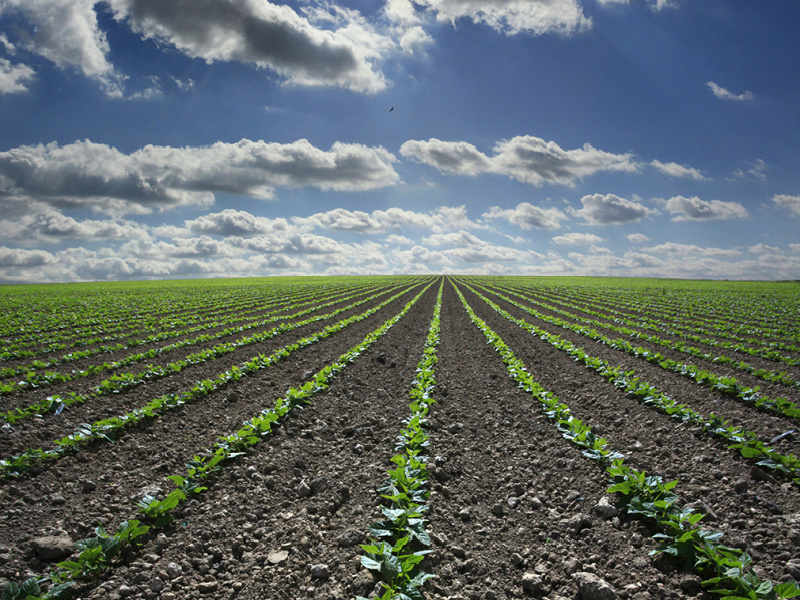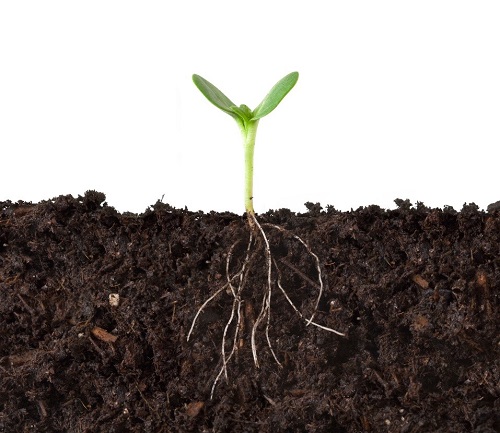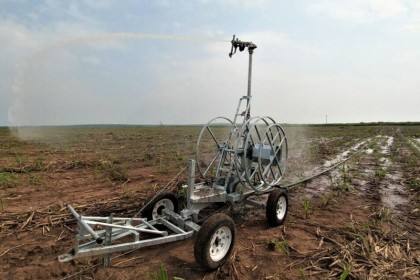
The ABC Of Dual Purpose Farming
Growers face mounting pressure to reduce the use of agrochemicals and fertilizers in their crop production system through the incorporation of sustainable practices. At the same time, there is growing awareness of the importance of striving towards a carbon neutral state. Carbon became a hot topic in 2019 when the South African government introduced carbon tax.
Although carbon tax currently does not affect the agricultural sector in South Africa, this may change with the conclusion of Phase 1 of Carbon Tax implementation in 2026. Proactive producers have responded by implementing regenerative agricultural practices to tackle both pressures: (1) sustainable production that limits the use of chemicals including fertilizers in agriculture and (2) the movement towards a neutral carbon state.
Regenerative agriculture has numerous definitions that touch on a plethora of ideas. Fortunately, an extensive review by Schreefel et al. in 2020 reduced the core themes of regenerative agriculture to improving soil health include its capacity to store carbon, alleviating climate change, improving water quality and overall environmental health, which would in turn improve human health and using environmental resources in an environmentally and economically sustainable manner. At the most practical level, regenerative agriculture focuses on increasing productivity by fostering a healthy ‘soil biological production base’ (Giller et al., 2021). Simply put, it strives to improve soil health by nurturing a balanced, active biolife that facilitates key processes such as nutrient decomposition, mineralization and fixation, carbon sequestration and it seeks to improve plant productivity by enhancing nutrient content and availability to plants.
Adopting a practice that both limits the use of chemical fertilizers and improves carbon sequestration can appear challenging to growers who don’t have much experience with sustainable and/or regenerative crop production systems, but there are a number of simple practices that one can implement as a start. Farming sustainably can be as easy as ABC. The production and application of anaerobic biodgestate, biochar and cover cropping are only three of the numerous practices that are available to growers who may feel intimidated by the thought of transitioning to regenerative agriculture.
A - Anaerobic digestate
Anaerobic digestion is the conversion of organic waste to methane and digestate slurry facilitated by anaerobic bacteria under anoxic (low to no oxygen) conditions. Anaerobic digestion reduces the methane that normally escapes from raw waste (often manure and sewerage) into the atmosphere. The digestater captures the methane, which is then used as a source of energy thus offsetting carbon and generating carbon credits. The slurry is typically high in primary macronutrients, particularly nitrogen (N), phosphate (P) and potassium (K) . It also contains secondary macronutrients like calcium (Ca) and micronutrients. Some researchers report that the nutrients in digestate slurry are more readily available than undigested slurry. The slurry has a variable pH that ranges from 7.3 to 9 and it contains biochemicals that can facilitate numerous reactions in the soil. The overall benefits depend on the feedstock used. An example is when yields were higher when mushrooms were grown on soil treated with digestate slurry derived from rice straw compared to when the mushrooms were grown on soil treated with digestate slurry derived from cattle manure. Not only does the production of anaerobic biodgestate generate carbon credits, improve the soil’s nutrient status and reduce the requirements of chemical fertilizers, but it also serves as a waste management strategy.
Even though there are notable benefits to its use, anaerobic digestate still has some disadvantages like the production of CO2 (this is often not included carbon accounting due to the net benefit of captured methane), a low C:N ratio that leads to the loss of nitrogen, a low organic matter content compared to other organic soil treatments. Growers need to consult with a knowledgeable soil scientist and agronomist before producing and applying the digestate.
B - Biochar
Biochar is formed when organic matter often woody, is decomposed under high heat and low oxygen conditions. Under normal circumstances, organic waste would decay or be burned leading to the release of carbon dioxide into the atmosphere. In the production process of biochar, the CO2 is converted into a solid form that is biologically unavailable. This effectively reduces the carbon that escapes into the atmosphere. When added to the soil, it can increase the soil’s pH due to its alkaline nature, improve water holding capacity and increase the nutrient content of the soil reducing chemical fertilizer requirements. It also increases soil organic carbon and matter promoting microbial activity.
The main disadvantages of biochar are (1) its high C:N ratio that can reduce nitrogen availability in the soil, (2) it may contain heavy metals or deliver excessive nutrients to the soil and plant (3) it can reduce the efficacy of agrochemicals by binding and deactivating the actives. It is worth mentioning that these cases are rare.
C- Cover cropping
Cover cropping is widely used due to its sheer number of advantages which include but are not limited to preventing soil erosion, improving soil moisture retention, break pest and disease cycles, increasing soil nutrient content, soil organic carbon, organic matter and promoting microbial activity. Cover crops can reduce the requirement for nitrogen fertilization in the subsequent season. Not only does it play a role in soil health, but it also sequesters carbon and contributes to the alleviation of climate change. According to Clarke (2015), cover crops planted on +/- 24 million hectares of land can sequester as much as 60 million metric tons of carbon dioxide annually.
The only caution with cover crop is that one must select an appropriate variety for a specific purpose, cut down the cover crop at the right time, ensure that it won’t serve as a host for persistent pest or disease and that it does not deplete soil moisture.
Transitioning to a mind-set of sustainable, regenerative agriculture is practical and the only way to approach the future of farming, but growers must be willing to take the initial step. With so many options available, it’s as easy as ABC.

References
- Clark, A. (2015). Cover Crops and Carbon Sequestration. Sustainable Agriculture and Research. https://www.sare.org/publications/cover-crops/ecosystem-services/cover-crops-and-carbon-sequestration/.
- Fernández, Y.B., Soares, A., Villa R., Vale, P., Cartmell, E. (2014, May). Carbon capture and biogas enhancement by carbon dioxide enrichment of anaerobic digesters treating sewage sludge or food waste. Bioresource Technology, 159, 1-7. https://doi.org/10.1016/j.biortech.2014.02.010.
- Glaser, B., Parr, M., Braun, C., Kopolo, G. (2009, May). Biochar is carbon negative. Nature Geoscience, 2(2). https://doi.org/10.1038/ngeo395.
- Ken, E.G., Renske, H., Jens A.A., James, S. (2021). Regenerative Agriculture: An agronomic perspective. Outlook on Agriculture, 50(1), 13–25. https://doi:10.1177/0030727021998063.
- Kumar, A., Verma, L.M., Sharma, S., Singh, N. (2022, January). Overview on agricultural potentials of biogas slurry (BGS): applications, challenges, and solutions. Biomass Conversion and Biorefinery. https://doi.org/10.1007/s13399-021-02215-0.
- Mahanjana, A. (2018, January). Examining links between soil fertility and various nutrient management regimes on yield and quality of sweet potato (Ipomoea batatas) [Unpublished Master’s dissertation]. Stellenbosch University.
- Malav, A., Khan, S.A., Gupta, A. (2015, September). Impacts of Biogas Slurry Application on Soil Environment, Yield and Nutritional Quality of Baby Corn. International Journal of Plant Research, 28 (2), 194-202. https//: doi:10.5958/2229-4473.2015.00055.5.
- Moukanni, M., Brewer, K.M., Gaudin, A.C.M., O’Geen, A.T. (2022, April). Optimizing Carbon Sequestration Through Cover Cropping in Mediterranean Agroecosystems: Synthesis of Mechanisms and Implications for Management. Frontiers in Agronomy, Section: Plant-Soil Interactions, 4. https://doi.org/10.3389/fagro.2022.844166.
- Nyang'aua, J.O., Møller H.B., Sørensen, P. (2022, August). Nitrogen dynamics and carbon sequestration in soil following application of digestates from one-and two-step anaerobic digestion. Science of the Total Environment, 851(158177). http://dx.doi.org/10.1016/j.scitotenv.2022.158177.
- Schreefela, L., Schulteb, R.P.O., de Boerc, I.J.M., Pas Schrijverb A., van Zanten, H.H.E. (2020, June). Regenerative agriculture – the soil is the base. Global Food Security, 20(100404). https://doi.org/10.1016/j.gfs.2020.100404.
For more agricultural products and services, click here.












